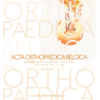Metaphyseal fixation in revision knee arthroplasty: a systematic review of the literature and meta-analysis of mid-long-term outcomes of metaphyseal sleeves and cones
Revision TKR; metaphyseal sleeves; metaphyseal cones; bone loss in revision arthroplasty
Published online: Jan 22 2023
Abstract
Metaphyseal augmentation has in recent years formed a key strategy in management of bone loss in revision knee arthroplasty. There are studies reporting excellent short-term results, however long- term data is lacking. There is also a paucity of studies comparing the most frequently utilised augments, metaphyseal sleeves, and cones. We conducted a systematic review and meta-analysis to evaluate and compare the mid to long term outcomes of metaphyseal cones and sleeves. We conducted systematic search of 4 databases (Medline, Embase, CINALH and PubMed). Seventeen studies were found to be eligible for inclusion of which ten investigated metaphyseal sleeves and the remaining seven investigated cones. Mean follow up across all studies was 6.2 years. The total number of patients included in the studies was 1319 and the number of knees operated on was 1431. We noted a higher revision rate of metaphyseal cones when compared to sleeves 10.85% vs 6.31 (p=0.007). Reoperation rates were also higher in cones compared to sleeves, 13.78% vs 3.68% (p<0.001). Prosthetic joint infection was the most common reason for revision. The difference in conversion rates, based on augment location was statistically significant p=0.019. When undertaking further sub-analysis; there was no statistically significant difference when comparing revision rates of; tibial vs femoral augments p=0.108, tibial vs tibial & femur p=0.54 but a difference was seen between femoral vs tibial & femoral augments p=0.007. Based on our data, metaphyseal sleeves demonstrate significantly lower revision rates compared to metaphyseal cones. However overall, both demonstrate reliable mid to long-term outcomes.
